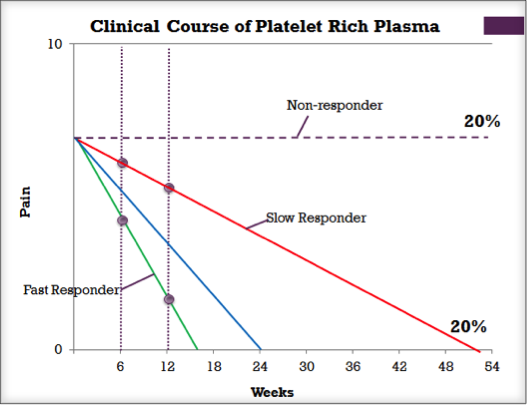Regenerative Medicine is an exciting new concept in sports medicine where the body is used to heal itself. At the Sports Medicine Center at Husky Stadium, sports medicine physicians are involved in studying and developing the latest techniques and offer a variety of services to the patient.
What Is Platelet Rich Plasma?
Platelet rich plasma or PRP is a portion of blood that has a high concentration of platelets. Platelets are filled with growth factors and when injected back into an injured area the growth factors can restart or stimulate healing.
How is PRP Made?
PRP is made from a patient’s own blood. Blood is drawn from a patient, put into a special device and then centrifuged or spun. The spinning will separate the different elements of the blood. PRP can be made with different concentrations of platelets, white blood cells and red blood cells. No one is sure which PRP preparation is the best. At the University of Washington Sports Medicine Center we have the ability to make several different types of PRP.
Does It Work?
Physicians at the University of Washington are leaders in the field of Biologic and Regenerative Medicine and have been doing biologic injections and research since 2008.
PRP for Tendons
The majority of research and injections that have been done at the UW and across the country have been in chronic tendon injuries. Tendon injuries that last for more than a few weeks are not inflammatory – they are degenerative. Tendon injuries occur along a continuum, as injuries worsen there are fewer treatments that are effective. Non-steroidal anti-inflammatory medications will relieve pain but they will not heal the tendon at this point. The same is true for rest. PRP can be effective when other treatments have failed. It should be tried after other treatments, especially eccentric exercises have been tried.
There are multiple studies in the medical literature, including randomized controlled trials that demonstrate the effectiveness of PRP in tendon healing. At the UW our average patient is 49, has had symptoms for 34 months and has failed multiple other treatments. We see that 20% of patients do not respond at all, 20% have a very slow response or get only somewhat better, and 60% will be mostly or completely better at 6 months. We cannot identify the 20% of patients that are not going to respond.
The healing process is slow because the body is building new tendon. It is also true that people heal at extremely different rates. At 6 weeks most people are only a little bit better. At 12 weeks it is easier to tell if people are quick responders, slow responders or non-responders. Sometimes slow responders will get a second injection at 12 weeks.

What to expect with your Platelet Rich Plasma Injection – Tendon
You will be scheduled for about 45 minutes for the procedure. Your blood will be drawn – typically between 9cc and 27cc of blood are drawn. The blood will be placed in a centrifuge and spun for about 15 minutes to prepare the platelet rich plasma. The procedure will be done the same day as your blood is drawn
Pain and medication with the procedure
The area you are having injected will be cleaned off and the skin will be numbed up. Ultrasound will used in most cases to make sure the injection is in the proper place. Most people experience mild discomfort with the procedure but some people experience more pain. There is no way to predict who will have more pain. If you have pain with the procedure you will be given a prescription for pain medication.
After the procedure you may experience some discomfort at the site of injection. If you experience a flare up of their pain which typically lasts for 2 – 5 days. Ice packs can be used to help with any pain you are experiencing (you do not need to ice unless needed to help with pain. You may also take acetominophen (Tylenol). DO NOT TAKE IBUPROFEN (MOTRIN) or NAPROXEN (ALEVE) or other anti-inflammatoriesfor at least three days prior to the procedure and at least three weeks after the procedure. If you can avoid it for three months after the procedure this is ideal. These medication inhibit platelets and may inhibit the healing process. You should also avoid aspirin. If you take aspirin for cardioprotection please continue to take it.
Activity after the procedure
Activity after the procedure should be limited. Most people are able to go back to work without much difficulty. Most people do not have difficulty driving after the procedure. If you are having a procedure on your foot you will most likely be in a boot for two weeks. If you think you may have difficulty driving please bring a driver.
For the first two weeks you should do normal activities of daily living only. In general – no extra exercise for fitness. If you are having a lower extremity procedure you can do upper extremity work outs or if you are having an upper extremity procedure it is possible you could do cardiovascular work outs. Ask your physician for details. In general activity is guided by “the next morning rule”. It is OK to experience discomfort with activity but pain should be back to its baseline by the next morning.
After two weeks you will begin a gradual return to activity using pain as your guide. A typical progression for lower extremity injuries is bike or swim at 2 weeks and elliptical trainer or stairmaster at 4 weeks. Ask your physician about activity concerns or goals you have.
Follow-up visits are scheduled at 6 weeks and 12 weeks after the procedure
PRP injections are not covered by insurance. PRP injections done with ultrasound guidance (which is necessary to make sure the injection is placed correctly) are $900.
Call 598-DAWG (3294) – option 8 to schedule.
PRP for Arthritis
PRP is increasingly used to treat arthritis. There are multiple well-designed studies that demonstrate PRP improves pain and function in people with knee arthritis compared to placebo (saline) or viscosupplementation (i.e. Synvisc One, Orthovisc, Monovisc, Euflexa, Supartz) The PRP is likely effective by increasing the body’s natural production of lubricating molecules and temporarily decreasing the cartilage breakdown process which is the hallmark of arthritis. PRP is more effective in those with less severe arthritis and the positive effects will typically wear off after 6 – 12 months. Most research has been done in knee arthritis but at the Stadium Clinic we can treat any joint. Larger joints like knees, shoulders, hips, and ankles seem to respond better than the small joints of the hand or foot.
What to expect with your Platelet Rich Plasma Injection – Joint
You will be scheduled for about 45 minutes for the procedure. Your blood will be drawn – typically between 9cc and 27cc of blood are drawn. The blood will be placed in a centrifuge and spun for about 15 -20 minutes to prepare the platelet rich plasma. The procedure will be done the same day as your blood is drawn. The area you are having injected will be cleaned off and the skin will be numbed up. Ultrasound may be used depending on the joint which is injected. Injections done with US cost $900 without US cost $600.
Pain and medication with the procedure
You may experience a flare up of their pain which typically lasts for 1 – 2 days but may last up to a week. Ice packs can be used to help with any pain you are experiencing (you do not need to ice unless needed to help with pain. You may also take acetominophen (Tylenol).
DO NOT TAKE IBUPROFEN (MOTRIN) or NAPROXEN (ALEVE) or other anti-inflammatories for at least three days prior to the procedure and at least three weeks after the procedure. These medication inhibit platelets and may inhibit the healing process. You should also avoid aspirin. If you take aspirin for cardioprotection please continue to take it.
Activity after the procedure
Activity for the first 48 hours after the procedure should be limited. Most people are able to go back to work without much difficulty. Most people do not have difficulty driving after the procedure. If you think you may have difficulty driving please bring a driver.
For the first 48 hours you should rest and then return to activity as tolerated. In general activity is guided by “the next morning rule”. It is OK to experience discomfort with activity but pain should be back to its baseline by the next morning.
Ask your physician about specific activity concerns or goals you have.
Scheduling
You will typically be scheduled for a consult visit first to determine if PRP is right for you or if there are other options you should consider. If PRP seems like the right decision you will scheduled to come back another day for the procedure.
PRP is not covered by insurance. PRP costs $900 if ultrasound is used and $600 if it is not. Generally ultrasound is used in all joints except knees.
Call 598- DAWG (3294) option 8 to schedule.
